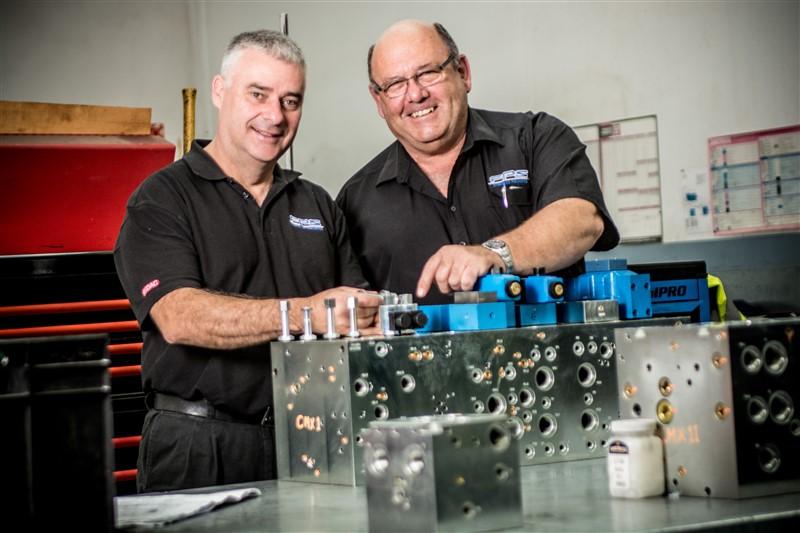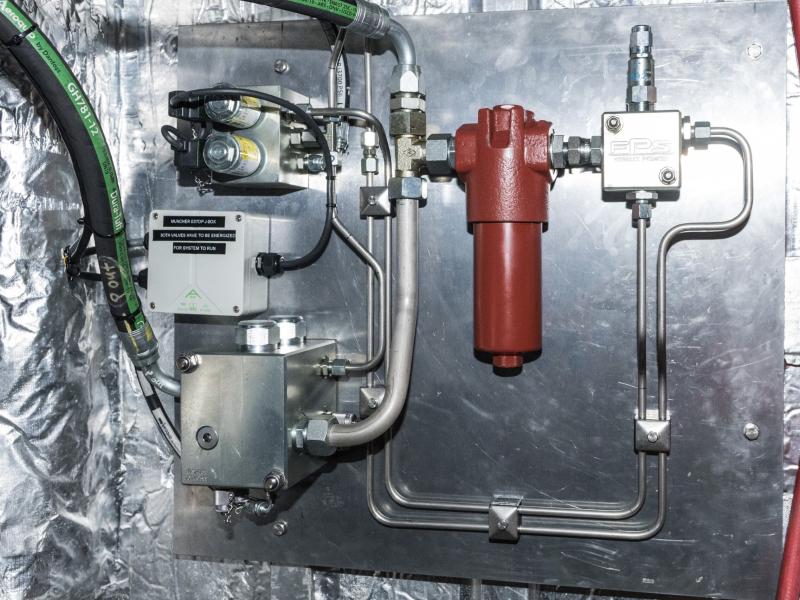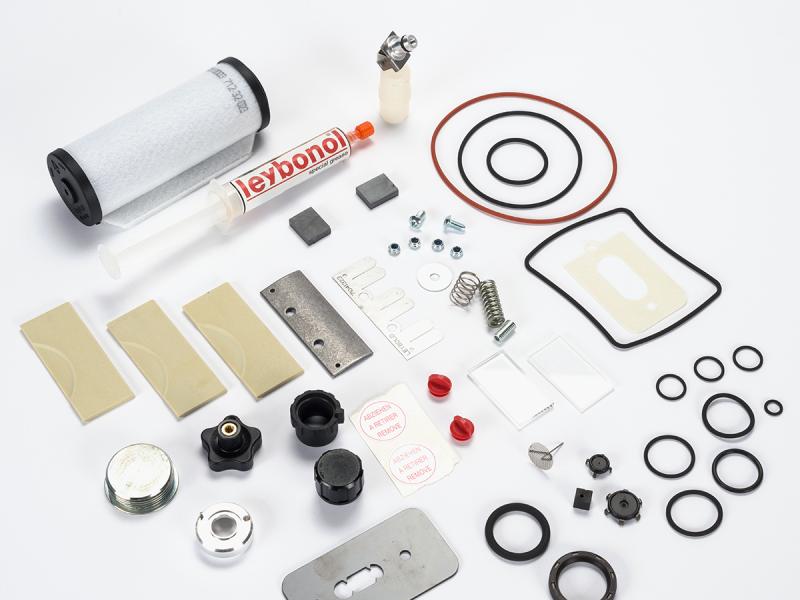You might see their hose vans out regularly across the top of the South Island, but it is the innovation and engineering inside FPS’ Nelson-based workshop that is the driving force behind industries across New Zealand. And it’s this that has set FPS apart as experts in hydraulic and pneumatic engineering.
FPS was established as Fluid Power Solutions some 20 years ago. At the helm is industry stalwart, Gary Allen.
Allen, who is now FPS’ sole director and majority shareholder, says that because hydraulic technology is so fast-moving, the opportunities for innovation are growing. “I’ve been working in this field for over 45 years now and have seen a lot of exciting developments in that time.
“And they’ve been quite varied, too. We’ve worked on many projects over the years, from hydraulic mooring systems in the UK, upgrades and new installs for on-shore and at-sea factories, fishing vessel winch systems, to forestry equipment and even pleasure craft. One of the most exciting recent developments I’ve been part of is the ClimbMAX Steep Slope Harvester.”
Forestry innovation with efficiency and safety in mind
The ClimbMAX is a huge step forward globally in terms of increasing safety in the forestry industry. It allows workers to harvest trees from steep slopes safely in a tethered machine. There’s no other harvester like this on the market.
“The latest version is a completely redesigned machine – a vision of Nigel Kelly, owner of Kelly Logging (Marlborough). Trinder Engineers (Richmond) take a traditional mechanical harvester and fully disassemble it, they then rebuild the track frame to accommodate the winch, guide/pinch rollers, safety blade, the hydraulic and electrical systems, and other components. Heavy equipment under the center joint keeps the center of gravity low for increased stability.”
The hydraulics solution begins with the winch and blade, designed by Allen. Integrated with a computerised system, the winch always works in unison with the machine’s tracks because the entire system is self-monitoring and self-regulating, leaving the operator to set a few system parameters and then get on with the work.
The hydraulics auto-correct if the machine starts moving too fast or the rope tension is nearing its maximum safe working load. It also has a blade with a rapid deployment system to stop the machine if required. The engine is monitored – if it stalls for any reason, then the track and winch brakes are automatically applied to prevent a runaway.
With the controls handled by the FPS customised system, the machine has full flexibility of movement on any slope, in any weather. It hugs the terrain and can move side-to-side as well as up-and-down, maximising the cut area per shift.
“The complex winch assist system and safety blade are controlled by three smart programmable controllers designed specifically for use with hydraulic components with high power consumption. There is no need for relays and other electrical equipment that can complicate the system and consume valuable space.
“We’ve tested this on slopes of up to 65 degrees and the machine works like a charm,” says Allen.
Not a bad work story
Alongside Allen is a team of 35, including skilled engineers and specialists. One of these being FPS’ other shareholder and Sales Engineer, Owen Little. Little has worked around the world and is another powerful name in hydraulic engineering.
One of Little’s more memorable jobs is a recent trip to Antarctica. FPS was selected from a global pool of candidates to help solve an issue with a critical scientific ice drill that takes core samples of ice, soil and rock from 2500 to 3300 metres below the surface. The project aims to give the scientific community access to a richer record of climate change on a variety of timescales, from the billion-year rock record to thousand-year ice and climate histories.
Little has since had another trip to the ice to install upgrades to the drill rig.
Innovation meets excellence
From the forestry industry to scientific drill rigs, innovation and excellence is embedded in everything the team at FPS do.
The work done in the fishing and aquaculture industries is no exception and is a culmination of decades of hydraulic engineering experience in these industries. As well as quality, sustainability is another important component with a particular focus on increasing efficiency, component life and on-board safety.
Sanford, New Zealand’s biggest seafood company, has adopted many FPS’ innovations. From a 10-tonne purpose-built marine grade deck winch for ‘The Pacifica’ to innovative new safety systems across their vessels.
The completely marinised winch system, like all the FPS manufactured marine components overcomes all the issues the team at FPS have found with other winches over the years – offering a promise of longevity unlike anything else on the market.
FPS’ marine industry expertise focuses on increasing component reliability, eradicating corrosion, reducing downtime, safeguarding people, reducing component noise, decreasing fuel consumption, and improving harvest rates through better hydraulic efficiency.
One of Allen’s first hydraulic jobs was on Talley’s first Amaltal vessel some 45 years ago and still today, Allen and the team at FPS are still working on Talley’s fishing vessels, albeit a much larger fleet. They also work across their fish processing, vegetable, and ice-cream factories in the top of the South and the West Coast.
Remote control systems, crane winches and flow controls are just some of FPS’ customised marinised componentry on board Talley’s fishing fleet. Talley’s were early adopters of the specialty marine grade technology from FPS, recognising the importance of gear and componentry that increased efficiency and component life.
FPS know that hydraulics are integral to the performance of many work boats, and that they must work effectively and efficiently to ensure productivity. Their purpose-built stainless-steel components have been developed to withstand the harsh marine environment and resist corrosion, while remaining easy to maintain and repair.
Another vessel you will see purpose-built marinised components on is the recently commissioned Vanguard, built by Q-West.
“The remote controllers, winches, extension cylinders, thrusters, water pump and other components have all been designed with purpose-built stainless-steel components that are marine-friendly. Unlike off-the-shelf products, water and salt won’t corrode these custom pieces, meaning they’ll have a long life,” says Allen.
“Our marinised remote controllers are being used on mussel harvesters, fishing trawlers, purseiners, and other vessels, and have been for over 10 years. We’ve not had a single failure yet. It’s exactly the kind of customised solution we do all the time for our customers.”
Innovation won’t stop
Innovation is never ending at FPS and the ways in which hydraulics contribute to making our industries more safe, sustainable, efficient and productive keeps evolving.
“We’ll never stop finding ways to do something better,” says Allen. “At FPS that’s just a given and why our customers remain loyal and keep coming back to us to find solutions.”
With this drive, comes the need for more staff. FPS have recently opened job opportunities for Senior Hydraulic Technicians through to trainee roles to accommodate the industry growth and demand for innovation across the industries they service.
The power in hydraulics
Hydraulics and Pneumatics
Tuesday, 09 November 2021






